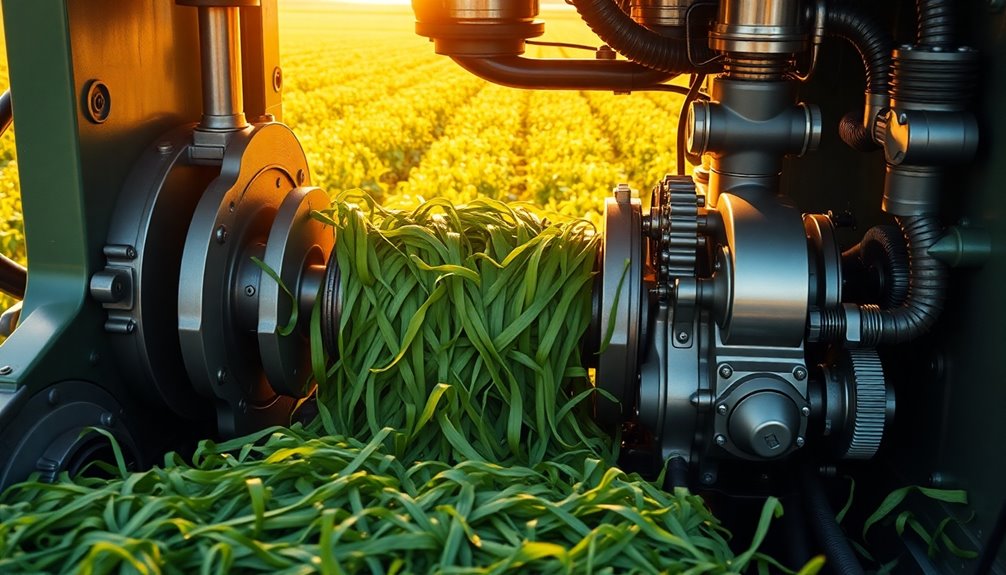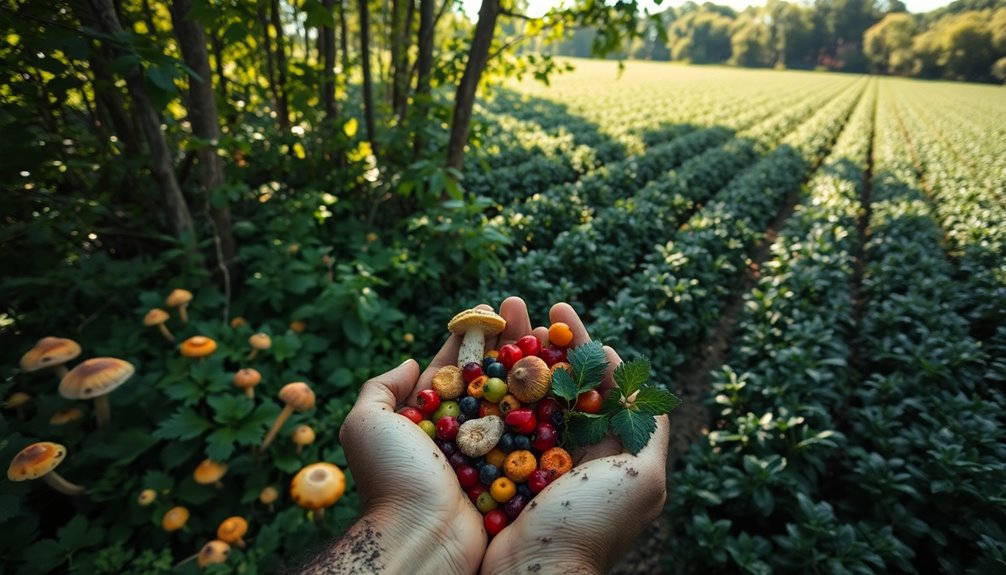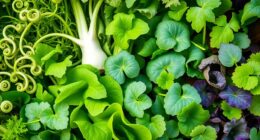A forage harvester is a powerful machine that transforms how you harvest crops for livestock feed. It features sharp blades that chop forage into manageable pieces, while feed rollers transport the material for efficient cutting. The engine drives high output capacities, with some models processing over 400 tons per hour. You'll also find advanced tech that optimizes cutting and enhances nutrition. With options from self-propelled to tractor-mounted, these machines adapt to various crop types. Understanding the mechanics and benefits can greatly affect your farming decisions. There's even more to discover about their impact on crop quality and livestock health!
Key Takeaways
- Forage harvesters use sharp blades to cut and chop crops into manageable pieces for efficient silage production, ensuring high-quality livestock feed.
- The machine's powerful engine, with up to 1,100 horsepower, enables high output capacities, processing over 400 tons of forage per hour.
- Advanced features like DuraDrum cutterheads and kernel processors optimize cutting precision and enhance the nutritional value of the processed forage.
- Real-time data systems monitor performance, allowing operators to customize settings for different crop types, maximizing efficiency and productivity.
- Automation and precision agriculture technologies are shaping the future of forage harvesting, improving sustainability and operational effectiveness in modern farming.
Understanding Forage Harvesters
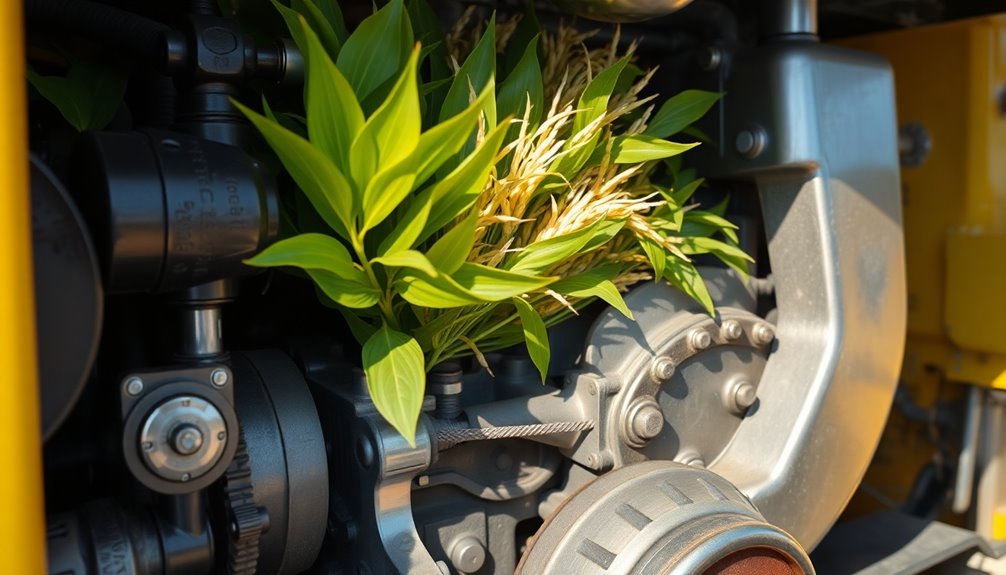
Forage harvesters are essential machines in modern agriculture, designed to efficiently cut, chop, and collect crops like corn and grass for silage production. Among the different types, the self-propelled forage harvester stands out due to its advanced capabilities and independence from tractors.
These machines can tackle large fields, thanks to features like a powerful engine that can produce up to 1,100 horsepower and cutting widths reaching 35 feet (11 meters) in a single pass.
What makes these harvesters so effective is their ability to chop forage with precision. They use fixed knives in their cutting heads, ensuring uniformity in the size of the silage. With an output capacity exceeding 400 tons per hour, they dramatically increase productivity on the farm.
Additionally, you can enhance their functionality with various attachments, such as kernel processors, which optimize the processing of cereal crops.
Modern forage harvesters also leverage electronic systems for operation, which boosts efficiency and simplifies the harvesting process.
Key Components of Operation
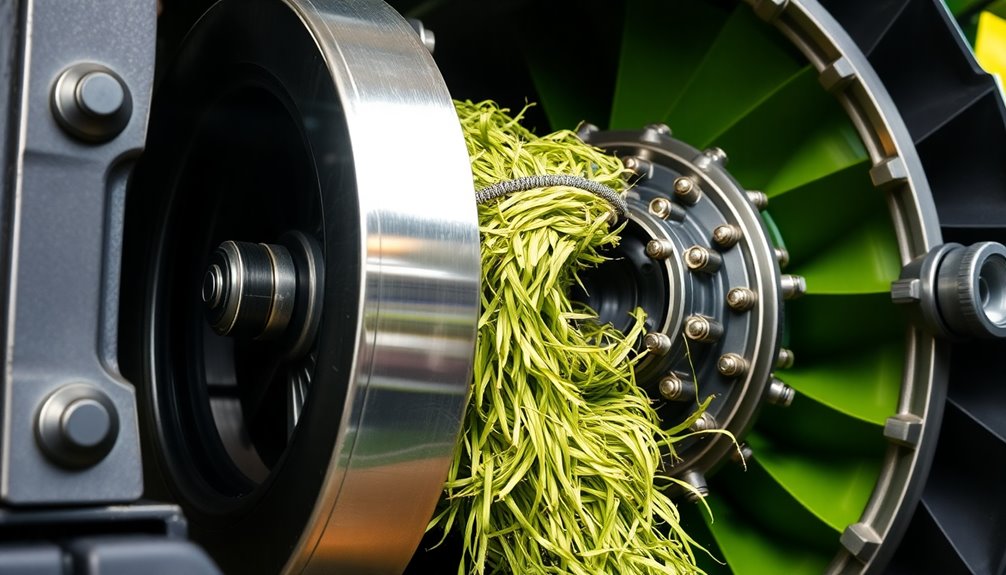
Understanding the key components of operation in a forage harvester is fundamental for maximizing its efficiency and output. At the heart of these machines is a powerful engine, with the largest models delivering up to 1,100 horsepower. This immense power allows you to tackle heavy loads without compromising performance.
One significant element is the cutterhead, equipped with fixed knives that guarantee precise chopping of forage. This precision is essential for optimizing the quality of the silage produced. Additionally, forage harvesters can cut a wide swath—up to 35 feet in a single pass—significantly enhancing your harvesting efficiency.
Modern forage harvesters are also integrated with advanced electronics, enabling real-time monitoring of performance metrics. This technology helps you make informed decisions during operation, ultimately boosting productivity.
If you're looking to enhance the nutritional value of your silage, consider adding a kernel processor. This component cracks kernels in cereal crops, improving the overall quality of the silage.
Process of Silage Production
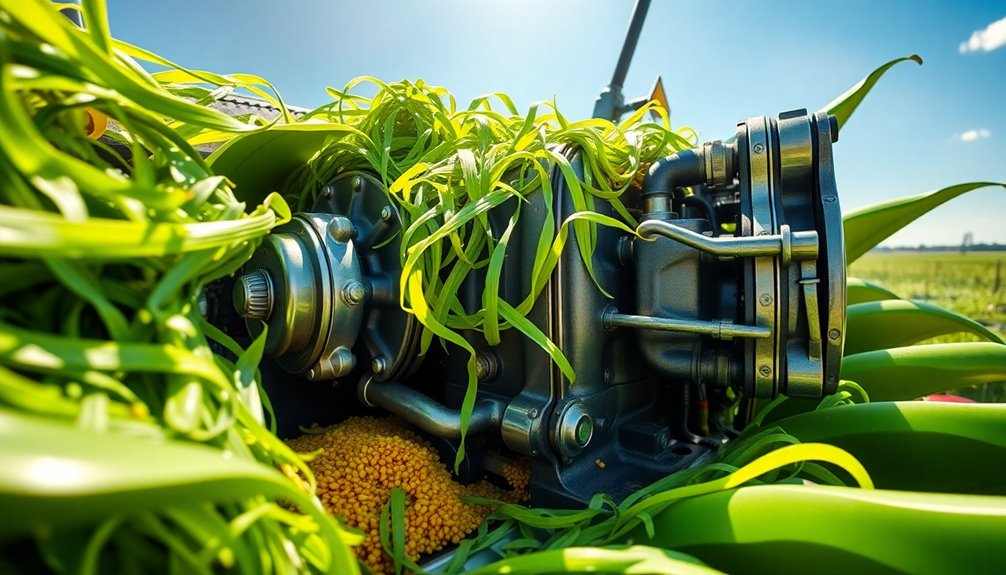
When you're producing silage, the cutting and chopping methods you choose play an essential role in the overall quality.
You should also consider using additives to enhance fermentation, as the right approach can greatly improve preservation.
Understanding these factors will help you optimize the fermentation process and guarantee your livestock gets the best possible feed.
Cutting and Chopping Methods
Cutting and chopping methods are essential in the silage production process, as they directly impact the quality and efficiency of feed for livestock. Forage harvesters play a key role in this, utilizing advanced cutting techniques to guarantee uniformity and ideal feed length. Here's how they work:
- Swath Width: Forage harvesters can cover a swath width of up to 35 feet (11 meters) in a single pass, achieving outputs exceeding 400 tons of silage per hour.
- Cutting Techniques: Different techniques are used for different crops. Grass silage is often wilted before harvesting, while maize is cut directly using reciprocating knives or saw-like blades.
- Length of Cut: The length of cut can vary from 5 to 76 millimeters (0.2 to 3 inches), which maximizes feed quality and influences fermentation.
Additionally, integrating kernel processors into forage harvesters can crack corn kernels during chopping, enhancing nutrient availability.
Additives and Fermentation Process
In the world of silage production, the use of additives plays an essential role in enhancing fermentation and improving overall quality. Additives like bacteria, enzymes, mold inhibitors, and preservatives are commonly employed to boost the fermentation process, particularly for various forage types.
While corn and sorghum silage already have high sugar levels that can reduce the need for additives, incorporating them can still elevate the fermentation process.
The fermentation process unfolds in four key phases: aerobic, fermentation, stable, and feed-out. Each phase is fundamental for preserving nutrients and ensuring high-quality silage.
During the fermentation phase, lactic acid bacteria thrive, producing acetic acid that lowers the pH. Ideally, you want this pH to reach between 3.8 and 4.0 for corn silage, indicating better preservation.
To maintain the integrity of your silage, it's essential to uphold anaerobic conditions throughout the process. This helps prevent aerobic deterioration, which can lead to organic acid degradation and increased microbial activity once the silage is opened. Additionally, using fermentation additives can significantly enhance the overall quality of the silage produced.
Versatility in Crop Handling

Forage harvesters excel in their versatility, efficiently processing a wide range of forage crops such as grasses, corn, and legumes. This adaptability is essential in today's diverse agricultural environments, guaranteeing you can handle both traditional crops and green fodder effectively.
With modern machinery, you can cut a swath of up to 35 feet (11 meters) in a single pass, which greatly boosts productivity during harvesting.
Here are three key features that enhance the versatility of forage harvesters:
- Interchangeable Cutting Heads: Tailored for different types of silage, these cutting heads guarantee ideal processing for each forage crop you work with.
- Crop Adaptability: Whether you're harvesting lush grasses or robust corn, forage harvesters can adjust to meet the unique demands of various crops.
- Enhanced Efficiency: By streamlining the harvesting process, these machines improve overall farming productivity, allowing you to achieve more in less time.
Incorporating forage harvesters into your operations can make a world of difference, guaranteeing you get the most out of your harvest while adapting to the needs of your land.
Advantages of Forage Harvesters

When it comes to maximizing your farming efficiency, forage harvesters offer numerous advantages that can transform your operations. These machines utilize precision cutting mechanisms to optimize crop length for silage, ensuring your livestock receives high-quality feed. By considerably boosting efficiency and productivity during harvesting, you'll find that the time and labor required for silage production are drastically reduced.
Moreover, forage harvesters effectively process forage crops, leading to improved crop yield and enhancing your overall agricultural productivity. This means more output with less effort, allowing you to focus on other essential farming tasks.
Additionally, these harvesters support sustainable farming practices by reducing waste and preserving the nutritional integrity of your harvested crops.
With advanced features like kernel processors and real-time monitoring, forage harvesters not only deliver superior silage quality but also minimize fuel consumption and operational costs. This combination of efficiency, quality, and sustainability makes forage harvesters an invaluable asset for any modern farmer looking to enhance their operations.
Embracing this technology can lead to a more productive and profitable farming experience.
John Deere Forage Harvesters
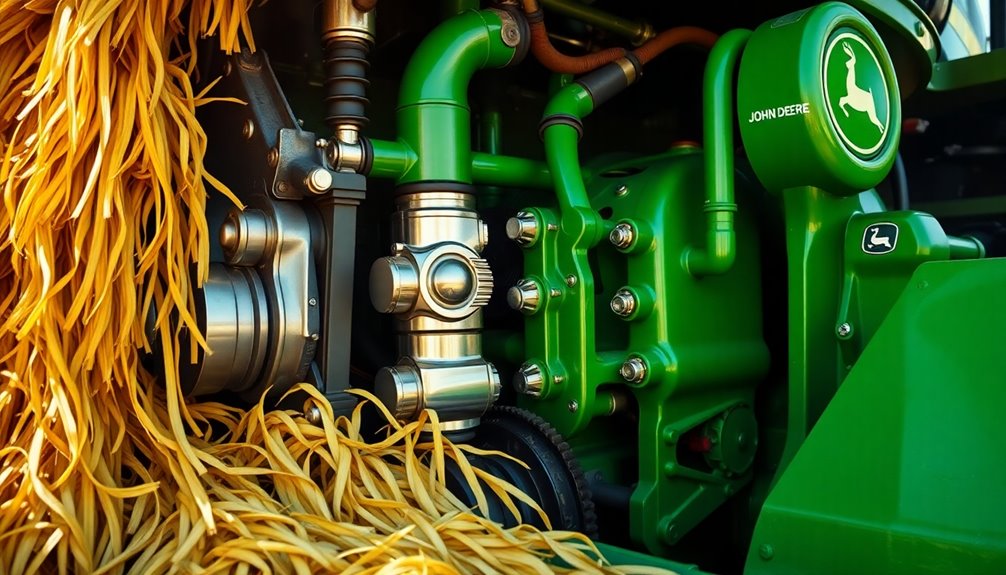
When you look at John Deere forage harvesters, you'll notice impressive engine power options, with the 8000 Series ranging from 375 to 626 horsepower and the 9000 Series offering up to 956 horsepower.
These machines incorporate cutting-edge technology, like DuraDrum cutterheads and KernelStar technology, to guarantee efficient and effective silage production.
With features designed for maximum productivity and customizable settings, you'll find that these harvesters greatly enhance your harvesting capabilities.
Engine Power Options
There's a range of engine power options available with John Deere forage harvesters that cater to various farming needs.
Whether you're running a small operation or a large-scale farm, these self-propelled forage harvesters offer something for everyone.
- 8000 Series: Features engine power options from 375 to 626 horsepower, providing an efficient solution for cost-effective harvesting.
- 9000 Series: Offers high-performance engines with options up to 956 horsepower, maximizing productivity while reducing fuel consumption by 10%.
- Harvesting Capacity: The 9000 Series can harvest up to 400 tons of corn per hour, showcasing its powerful capabilities for large operations.
Both series are designed for peak performance, ensuring you get the most out of your investment.
With advanced features like the 772 Big Drum Corn Header, which allows for harvesting at an impressive rate of 7 tons per minute, you can tackle your harvesting tasks with ease.
Plus, the 9000 Series includes a 5-year JD Link subscription for ongoing machine health monitoring, ensuring your harvester runs smoothly and efficiently throughout the season. Additionally, proper RMD planning can help optimize your investment returns in agricultural equipment.
Cutting Technology Features
John Deere forage harvesters combine powerful engine options with cutting-edge technology to enhance your harvesting experience. Their advanced DuraDrum cutterheads guarantee precise cutting of forage crops, maximizing silage quality and length.
You'll appreciate the Auto LOC feature, which allows you to customize the cutting length based on specific forage conditions, enhancing adaptability during harvesting.
Thanks to this innovative cutting technology, you can achieve output rates of up to 400 tons of silage per hour, making it an ideal choice for large-scale farms. The versatility of the harvester shines through with different cutting heads that can be utilized for various crop types.
Whether you're working with corn or grass silage, specialized configurations guarantee peak performance across diverse agricultural environments.
Moreover, John Deere forage harvesters incorporate innovative electronic systems that enhance operation management. These systems provide real-time data, helping you fine-tune your harvesting strategy.
With these cutting technology features, you're equipped to tackle any harvesting challenge efficiently, ensuring that your operation runs smoothly and productively.
Embrace the future of agriculture with John Deere's superior cutting technology, designed to meet your needs.
Efficiency and Productivity
Boosting efficiency and productivity is at the heart of John Deere forage harvesters, especially the 9000 Series. These machines deliver a 10% increase in productivity while cutting fuel consumption by 10%. This makes them perfect for your large-scale operations.
Here's how they enhance your efficiency and productivity:
- Powerful Engine Options: With up to 956 hp, these harvesters can tackle an impressive 400 tons of corn per hour.
- High Throughput Header: The 772 Big Drum Corn Header processes corn at a remarkable rate of 7 tons per minute, ensuring you get more done in less time.
- Advanced Monitoring Features: Equipped with the Harvest Lab 3000, you can access real-time moisture sensing and yield monitoring, allowing you to make informed decisions on the go.
Additionally, John Deere forage harvesters can cut a 35-foot (11m) swath in a single pass, greatly enhancing your harvesting speed.
Comparing 8000 and 9000 Series
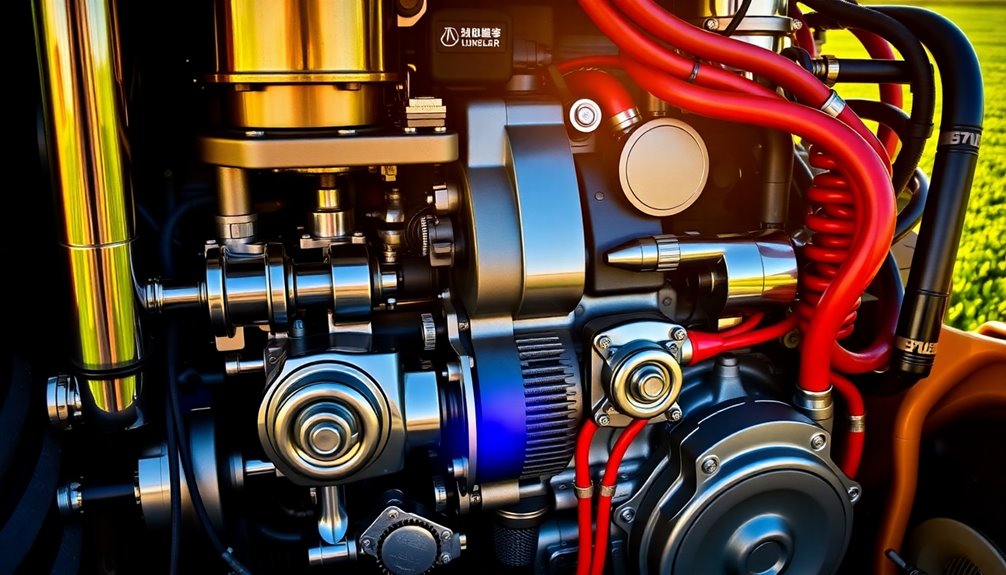
When comparing the 8000 and 9000 Series forage harvesters, you'll find distinct advantages tailored to different farming needs. The John Deere 8000 Series is ideal for farmers who may not require the higher capacity of the 9000 Series. With engine power ranging from 375 to 626 hp, it's a cost-effective choice, especially for smaller operations. In contrast, the 9000 Series boasts engine options up to 956 hp, allowing it to harvest an impressive 400 tons of corn per hour.
Here's a quick comparison to help you visualize the differences:
| Feature | 8000 Series | 9000 Series |
|---|---|---|
| Engine Power | 375 – 626 hp | Up to 956 hp |
| Silage Technology | DuraDrum, KernelStar | Extreme Kernel Processor |
| Productivity Increase | Baseline | 10% increase |
| Fuel Efficiency | Baseline | 10% decrease |
Both series come equipped with advanced features like the Harvest Lab 3000 for moisture sensing, but the 9000 Series also includes a 5-year JD Link subscription, enhancing machine health monitoring and fleet management.
Technological Innovations in Harvesting
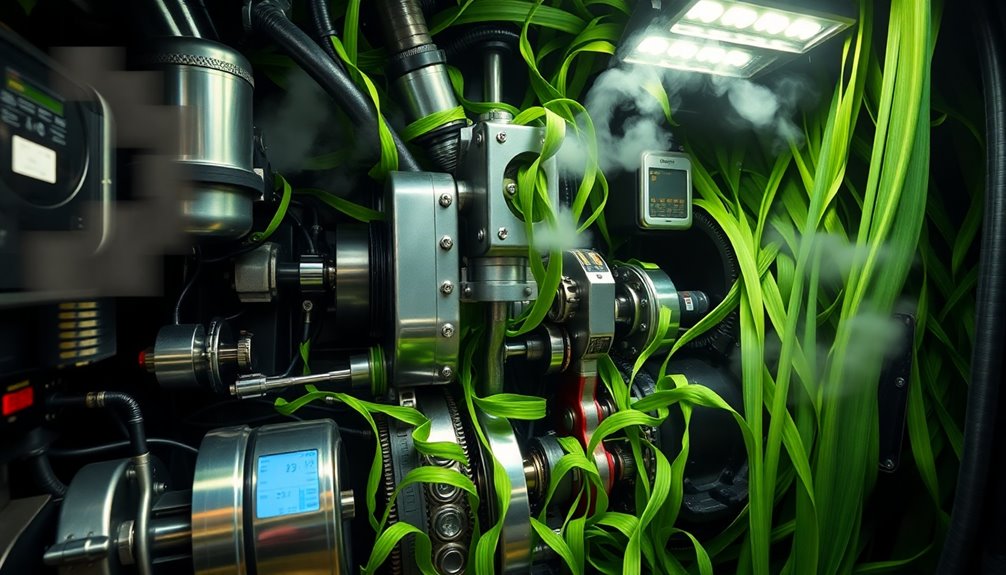
Harvesting today is revolutionized by technological innovations that enhance efficiency and productivity. Modern forage harvesters, like the John Deere 9000 Series, are at the forefront of this transformation, capable of handling various crop types with impressive power and precision. Here's how they're changing the game:
- Powerful Engines: With options producing up to 956 horsepower, these machines can harvest up to 400 tons of corn per hour, making them a powerhouse on the field.
- Real-Time Monitoring: Technologies like the Harvest Lab 3000 provide real-time moisture sensing and yield monitoring, assisting you in making informed decisions during the harvesting process.
- Automated Systems: Features like automatic signaling for bale density completion and coordinated tailgate operations streamline your workflow, greatly reducing labor efforts.
These technological innovations not only improve silage quality through extreme kernel processors but also facilitate data sharing via platforms like the John Deere Operations Center.
This guarantees you have insights into machine health and performance analytics, leading to more effective farm management. Embracing these advancements will make your harvesting operations more efficient and productive than ever before.
Impact on Livestock Nutrition

Transforming the landscape of livestock nutrition, forage harvesters play an indispensable role in producing high-quality silage that serves as a key dietary component for animals. By efficiently harvesting various forage crops, including corn silage, these machines guarantee a consistent supply of nutritious feed vital for livestock health.
The meticulous cutting and processing capabilities of forage harvesters help preserve essential vitamins and minerals, enhancing the nutritional integrity of the forage. Silage produced from these harvesters can provide up to 70% of the dietary needs for cattle and other ruminants, greatly contributing to their growth and milk production.
With advanced technologies, such as KernelStar processors, forage harvesters break down kernels effectively, improving feed efficiency and nutrient absorption in livestock. This means your animals get the most out of their feed, supporting their overall health and productivity.
Incorporating high-quality silage into your feeding regimen not only supports sustainable livestock farming practices but also guarantees your animals thrive year-round. By investing in forage harvesters, you're making a vital step toward enhancing livestock nutrition and fostering agricultural abundance.
Frequently Asked Questions
How Does a Forage Harvester Work?
A forage harvester works by using a cutterhead with fixed knives to chop and gather forage crops like corn and grass.
You can choose between tractor-mounted or self-propelled models, some offering impressive horsepower and wide cutting swaths.
The chopped forage gets blown into a connected wagon for quick transport.
You can also adjust the cut length to optimize silage quality, ensuring your livestock gets the best feed possible.
What Is the Difference Between a Harvester and a Forage Harvester?
When you think of harvesting, you might picture fields full of golden grain, or lush green forage.
A harvester typically focuses on reaping, threshing, and cleaning grain crops, while a forage harvester is specialized for cutting, chopping, and collecting forage crops like corn and grass for silage.
While the former works primarily with grains, the latter supports livestock feed production, showcasing their distinct roles in the agricultural landscape.
What Does a Self-Propelled Forage Harvester Do?
A self-propelled forage harvester cuts, chops, and collects forage crops like corn and grass, making it essential for silage production.
You'll notice it's equipped with powerful engines, enabling it to handle wide swaths and produce tons of silage quickly.
The specialized cutterheads enhance the quality of the forage, while advanced features like moisture sensing help you optimize your harvesting operations, ensuring your livestock gets the best feed possible.
How Much Horsepower Does a Forage Harvester Have?
Forage harvesters boast impressive horsepower, typically ranging from 375 to over 1,100 horsepower.
If you're considering the John Deere lineup, the 8000 Series offers between 375 and 626 horsepower, while the 9000 Series can reach up to 956 horsepower.
This power allows you to cut wide swaths and maximize efficiency, achieving over 400 tons of silage output per hour.
With such capabilities, you're equipped for large-scale agricultural operations.
Conclusion
In the grand theater of agriculture, forage harvesters strut their stuff like prima donnas, turning fields into silage with a flair that would make any Broadway star jealous. You've witnessed how these machines blend innovation with brute strength, ensuring your livestock won't go hungry. So, while you're out there enjoying the fruits of this harvest, just remember: behind every munching cow is a forage harvester, tirelessly working its magic—truly the unsung hero of your farm's prosperity!

